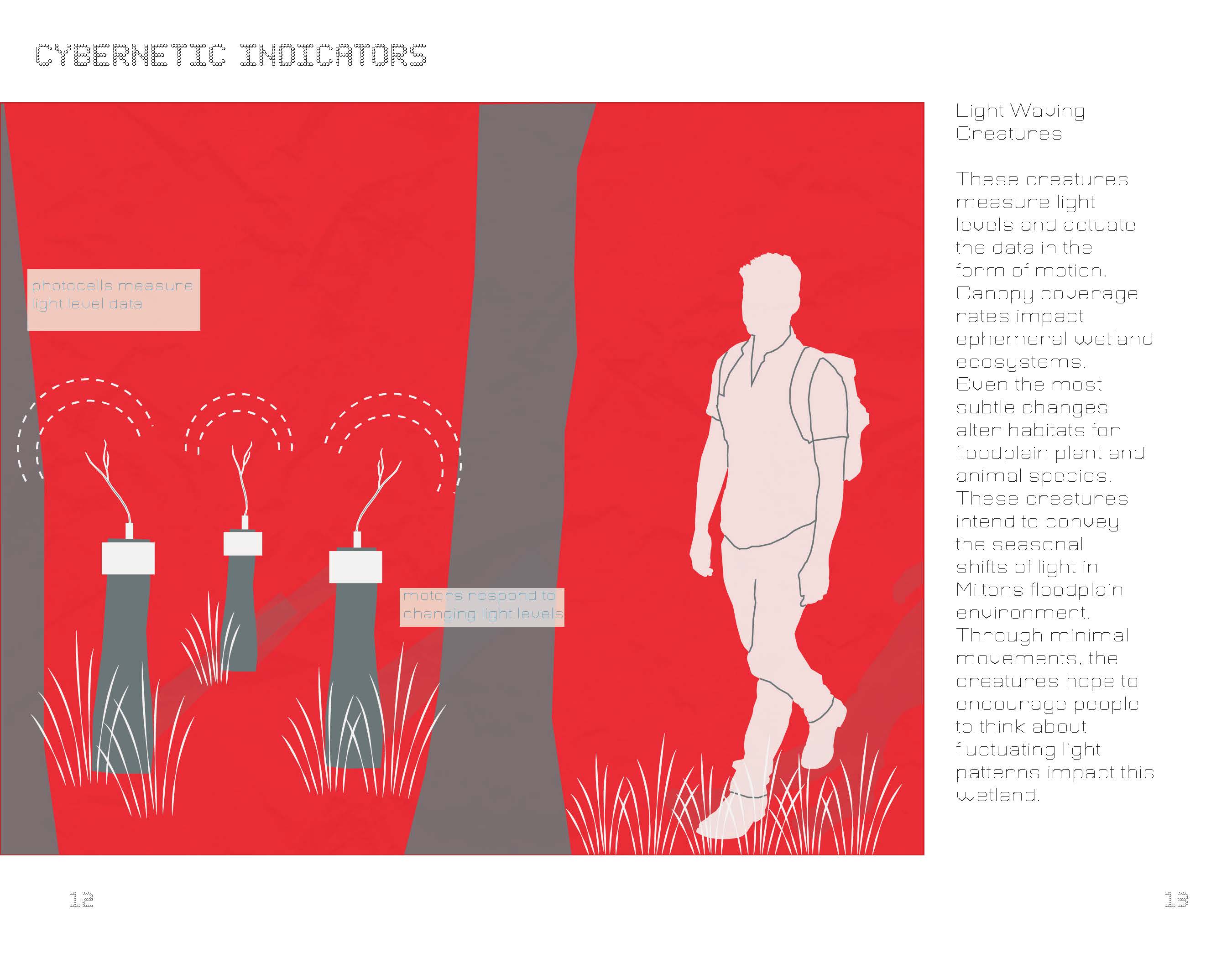Lizzie Needham
CYBERNETIC SPECIES
A New Taxonomy of Bioindicators for New Communities of Relation
Thesis: Building on the socio-ecological concept of indicator species, the cybernetic creatures of the Milton Land Lab prototype a playful use of open-source sensing technology to communicate environmental phenomena and encourage engagement with local landscapes by new constituencies.Project positioning: Landscape care begins with interest and understanding. The cybernetic creatures of Milton intend to serve as a bridge between humans and the environment. These creatures read abiotic site data-- soil moisture, light, humidity, and temperature-- and actuate these readings in the form of movement and sound. Their responses help communicate that the biophysical world is a living entity that humans are a part of, something that it is easily forgotten now. Because they are electronic sensors, the creatures not only collect data that serves as useful information for site maintenance, but also offer a “way into” the landscape for those that may not typically be interested in the environment.The creatures utilize arduino, an open-source electronic platform, in order to encourage further involvement and adaptation. The hope is that this project is self-replicating, and grows over time. Cybernetic indicator species are most effective as a herd as data collection and political engagement increase with scope. Through community input, the creatures adapt in physical form and data expertise. In an ideal world, the creatures would move beyond the Milton Landlab and onto other spaces that connect with the new makers of creatures. Overtime, the creatures begin to close the illusion that humans are separate from the non-human world, and will encourage political involvement and broader notions of care towards the environment










